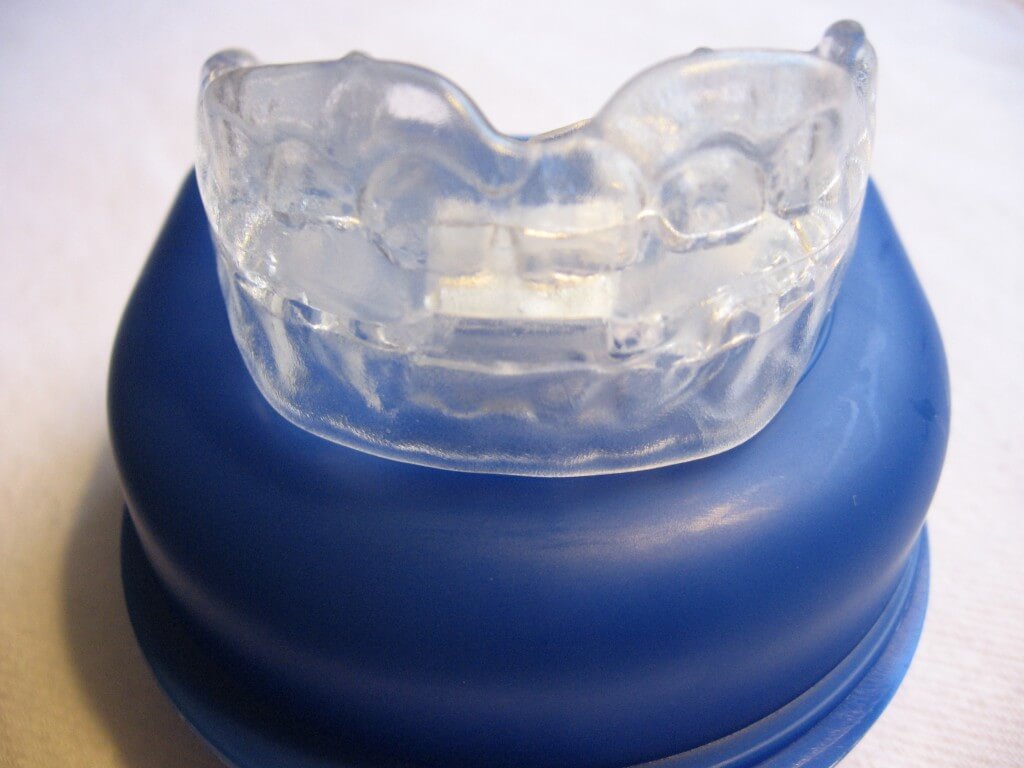☆☆☆☆☆ 4 Star RatingProduct Information
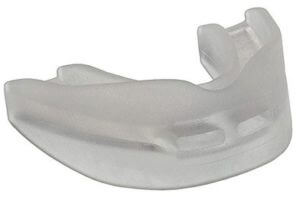
Design
SnoreMeds is a simple boil and bite style thermoplastic Mandibular Advancement Device (MAD) that is used to prevent snoring. Its design features two air holes at the front which are an essential component for those who breathe through their mouth while asleep. This mouthpiece forms to the contour of your teeth by heating the entire unit in boiling water for 18 seconds and then placing into your mouth.
It’s designed to hold the lower jaw slightly forward which helps to clear the airway by preventing loose airway tissues from vibrating against each other. While the idea of the MAD may sound far-fetched, the concept has been scientifically proven several times over since the 1980’s and for years has been used by dentists to treat snoring issues and in some cases mild sleep apnea.
However, the at-home style MAD’s did not appear until 1994 when Snoreban introduced the first DIY snoring mouthpiece. Since then, dozens of manufacturers have replicated and sold this style of MAD, SnoreMeds being one of them.
Company information

SnoreMeds Co-founders Michelle Hall-Jones (Left) & Philippa Logan (Right)
In recent years, the demand for anti-snoring products has sharply risen as an increasing number of snorers attempt to cope with this bedroom hindrance on a nightly basis. With an increase in demand for such products, dozens of entrepreneurs began to manufacture and sell snoring mouthpieces with high hopes of taking home their piece of the market share pie. The creators of SnoreMeds happened to start their company in the midst of the stop snoring boom.
SnoreMeds started selling their product locally in 2006 and expanded their global reach to include Norway, the United States, New Zealand, and Australia in 2008. In 2010 they introduced gender-specific devices which accommodate both “regular” size and “small” size mouths.
It all started in 1994 when two women from Durban, South Africa – Michelle Hall-Jones and Philippa Logan came together to form their first company together, Trio Interactive. Trio Interactive is a digital design solutions business that offers creative design solutions, web development, and online media solutions as well as several other services.
Years later, the duo of Trio decided to use their specialized knowledge in web development combined with a conglomerate of information obtained from industry experts on the subject of snoring to form SnoreMeds.
SnoreMeds currently operates as a subsidiary of Trio Interactive with its home office in South Africa, although they have branches in Valley Cottage, NY (USA), Tampere, Finland as well as a distributor in New Zealand.
Available sizes and pricing
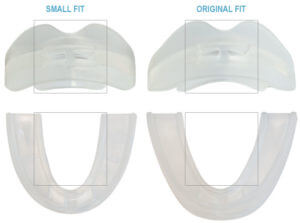
Sizing
SnoreMed’s come in two different sizes – regular and small. While SnoreMeds associates their regular size with “Men” and their small size with “Women”, the important message to remember is that when choosing the appropriate size, you should first consider the actual size of your mouth rather than your gender.
While it’s true that most women have a smaller mouth in comparison to men, it’s quite possible that a woman with a larger than average size mouth may benefit more from the regular size device or what the company refers to as “Men’s” size. Likewise, a man with a smaller than average size mouth may want to consider purchasing the small size or “Women’s” size.
Pricing
 One unique perk that this company offers is the ability to allow you to purchase mouthguards in bulk at a discounted rate. While most manufacturers offer only one device, SnoreMeds allows you to choose from three different packages- single, double, or value pack. Of course, the more that you purchase at once, the lower your cost per unit will be. Since the average lifespan of this particular mouthpiece is about 4 months, stocking up may not be a bad idea, especially when they are available at a discounted rate.
One unique perk that this company offers is the ability to allow you to purchase mouthguards in bulk at a discounted rate. While most manufacturers offer only one device, SnoreMeds allows you to choose from three different packages- single, double, or value pack. Of course, the more that you purchase at once, the lower your cost per unit will be. Since the average lifespan of this particular mouthpiece is about 4 months, stocking up may not be a bad idea, especially when they are available at a discounted rate.
Below is a chart showing the cost per mouthpiece including shipping for the various packs that are currently being offered. Note, right now the company is offering free US shipping on orders over $98.95.
| Package | Quantity | Price | Shipping Cost | Price Price Unit |
|---|
Single Pack
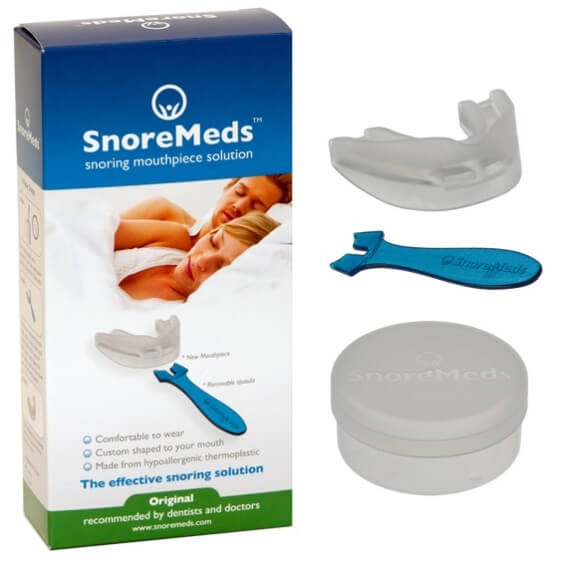 | 1 | $40.90 | $7.84 | $48.74 |
Double Pack
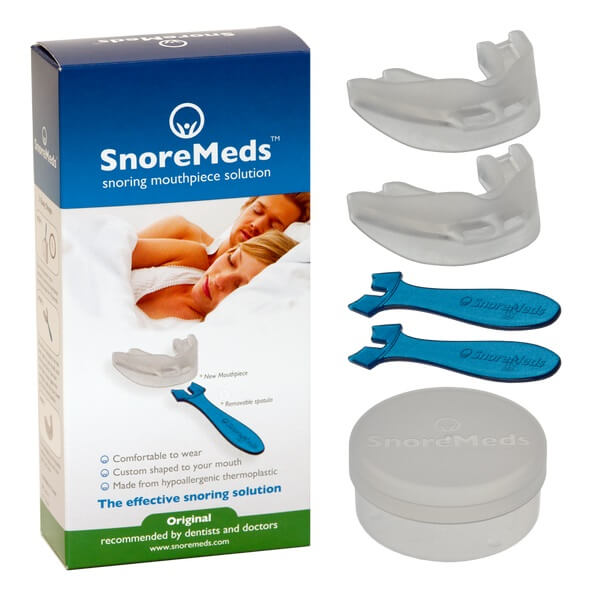 | 2 | $59.95 | $7.84 | $33.90 |
Value Pack
 | 4 | $98.95 | $0.00 | $24.74 |
| | | | |
Looking at the above chart, it’s fairly easy to see that the per unit cost (including shipping if applicable) is 60% less if you were to choose the four pack and 36% less if you were to go with the 2 pack instead of the single.
Compared to the industry average, the single pack is substantially less expensive than other single products industry-wide while the four-pack sells for about the same price as one mouthpiece from other manufacturers.
What’s the catch? How can SnoreMeds sell their product for substantially less than their competitors who sell a near identical product? While I’m not completely sure of how the company operates, I can only make an educated guess.

Buying in bulk can save money
The simplest explanation is that it all boils down to production cost. Throughout the years of reviewing snoring mouthpieces, I have learned that the cost to produce a simple boil and bite mouthguard is probably a lot less than most people could ever imagine. While I’m not going to reveal the actual average cost that I have heard, I will speculate that the SnoreMeds is being produced for pennies on the dollar.
Granted, most manufacturers spend gobs of money on advertising, maintaining a warehouse, payroll, etc, however, there’s still quite a bit of wiggle room built in there.
You can think of SnoreMeds as the Walmart of mouthpieces. While they are working with lower profit margins in comparison to their competitors who are selling one boil and bite device for $60, they are making their money by selling in volume.
Can you find these devices for even less than $25.00 each? Absolutely! I have seen plastic mouthpieces being sold on eBay for less than $2.00 each including shipping. However, I would never recommend putting one of these in your mouth because they can be highly toxic. Why? Because extremely inexpensive mouth guards are almost always mass produced in a third-world country using questionable plastic material that is likely not at all safe.
The difference here is that the SnoreMeds comes from a well-established company that is known and trusted. They use latex and BPA-free plastics and are made from FDA cleared material, making their product safe when used as directed. A mouthpiece being sold for the purpose of reducing or eliminating snoring without these credentials is potentially dangerous.
Visit Snoremeds Website
Money back guarantee
 In general, most manufacturers offer some type of “money back guarantee” or “satisfaction guarantee” with their product. Industry-wide, this guarantee period is typically for 30 days after the product is received.
In general, most manufacturers offer some type of “money back guarantee” or “satisfaction guarantee” with their product. Industry-wide, this guarantee period is typically for 30 days after the product is received.
SnoreMeds offers a guarantee period of 45 days after receipt of shipment. While having an additional 15 days to decided whether or not to keep the device is a nice selling point, it’s not at all necessary. As with any mandibular advancement device, you will know within the first week whether or not it’s going to work for you.
Their return policy states that if you receive a damaged product or wrong one, they will exchange it free of charge.
As for returning a mouthpiece that you are not satisfied with, they will refund the total amount paid minus the shipping cost which is $7.84 for US buyers. The buyer is also responsible for return shipping which will cost between $3-$4 (domestic shipping) using the least expensive option of USPS first class mail. Ultimately, the total out of pocket expense for simply trying one and returning is somewhere around $12.
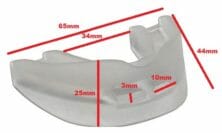
Measurements for regular size
Measurements
Since the one I tested is the regular size, or “men’s size” as the company refers to it as I’m only able to offer the measurements for this particular size. The women’s size will, of course, be smaller.
At it’s widest point, it measures 65mm (2.5″) outside and 34mm (1.3″) inside. The overall depth is 44mm (1.7″). It’s 25mm (1″) thick at the very front. The two breather holes measure 3mm tall and 10mm wide.
FDA status, BPA & Latex
When it comes to choosing a mouthpiece, there are three key points that everyone should consider – FDA status, use of BPA’s, and use of latex.
All three are important considerations that should be examined prior to making a decision.
Out of all boil and bite MAD’s that are currently on the market, only a handful are actually being sold with FDA clearance. The FDA classifies devices such as the SnoreMeds as a class II medical device. It’s up to the manufacturer to convince the FDA that their product is “substantially equivalent” to similar products on the market, making it safe to sell.
 While looking into the FDA status of the SnoreMeds, I noticed that the manufacturer states that they use “FDA cleared materials” to produce their mouthguards. The use of such material is recommended as other types of material used to produce an oral appliance could be potentially hazardous to your health.
While looking into the FDA status of the SnoreMeds, I noticed that the manufacturer states that they use “FDA cleared materials” to produce their mouthguards. The use of such material is recommended as other types of material used to produce an oral appliance could be potentially hazardous to your health.
As for being BPA free, while the Environmental Protection Agency (EPA) claims that BPA’s are not harmful while others suggest that it may cause health concerns and should be avoided if possible. Since this mouthpiece will remain in the mouth for 8 plus hours every night, it may be a good idea to play it safe and use a product that is labeled as BPA free. The SnoreMeds is labeled as “BPA free“.
Those with latex allergies will want to take a close look at the materials used before choosing a device that contains latex. According to the manufacturer, this device does not contain latex so it should be suitable for those with such allergies.
So what exactly is used to make the SnoreMeds? If you were to look closely each mouthpiece you will notice the letters “EVA” stamped in the corner. These three letters can shed some light on exactly what this device is made from. EVA stands for Ethylene-vinyl acetate. This is a copolymer of ethylene and vinyl acetate and it’s commonly used to produce boil and bite style mouthpieces.
Current customer feedback
 Being around for nearly a decade, there are several product reviews scattered across the internet. Here are a few customer reviews that I came across while searching for information on this product.
Being around for nearly a decade, there are several product reviews scattered across the internet. Here are a few customer reviews that I came across while searching for information on this product.
“This works for me, so it’s a repeat order. Fast shipping. Thanks!” – eBay customer feedback
“Thank you, Thank you, Thank you!! You have officially given me my life back. I was just about to give up on a wonderful 13 year relationship as it was just too much of a strain and with 1 small little mouth guard my life returned in an instant. Your product works well and I will recommend this to anyone with a problem. As a woman I don’t like to admit to the problem but this product has made my life just so much better. Well done & a big thank you!” – SnoreMeds Facebook feedback
“It works as long as I can keep it in my mouth all night. It was rubbing on one side of my gums and needed to be trimmed off” – Amazon review from Bret
My experience trying the SnoreMeds

My SnoreMeds before fitting
Throughout the years I have literally tried dozens of different boil and bite style mouthpieces and wrote about my experience on this website. While there are usually some slight variations in design, they are all almost identical when it comes to function (with the exception of the Good Morning Snore Solution).
After receiving the SnoreMeds and taking a quick look, it was obvious that this was yet another standard run of the mill boil and bite device. Being run of the mill is not necessarily a negative connotation as past experience has taught me that such mouthpieces have proven to be incredibly effective, comfortable and durable, despite their simplicity.
After reading over the instructions I was ready to give the SnoreMeds a try. Here’s a quick rundown of how I prepped my mouthguard for use.
Fitting
- Place the handle into the air hole in preparation for the fitting process. Ensure that the handle is inserted completely into the front of the mouthpiece
- Bring about 2-4 cups of water to a boil and pour into a mug or bowl
- Completely submerge the SnoreMeds into the boiling hot water for exactly 18 seconds. (It might require an extra 5 seconds if not soft enough)
- Remove and ensure that the plastic edges are not folded over. If they are, use a finger to straighten out the edges before proceeding.
- Place the mouthpiece into your mouth with the curved side facing up (very important). Use a mirror to help center it inside of your mouth.
- Bite down firmly and immediately push out on your lower jaw to move it out 3-5mm. This is perhaps the most important part of fitting the device. Without advancing the jaw forward, this product will not work.
- Run your fingers along the outside of your teeth and use your tongue to push the plastic against the inside of your teeth. Hold this position for about 30 seconds to one minute.
- Remove the mouthpiece and dip it into a bowl of ice-cold water or run it under cold tap water.
- Remove the fitting handle and check for proper fit. When in place the lower jaw should be resting slightly forward from its natural position.
- If the proper fit is not achieved, the manufacturer recommends trying to fit once more. Heating the device and fitting it more than twice will compromise the integrity of the material.
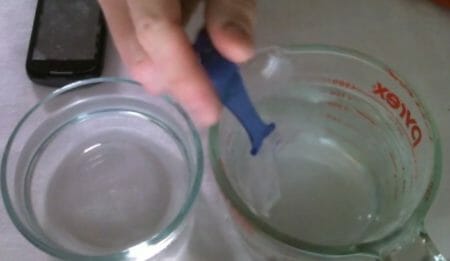
With the handle inserted, drop the SnoreMeds into boiling hot water for 18 seconds
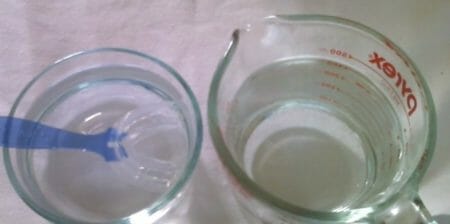
Place SnoreMeds into cold water for about one minute after creating an impression.
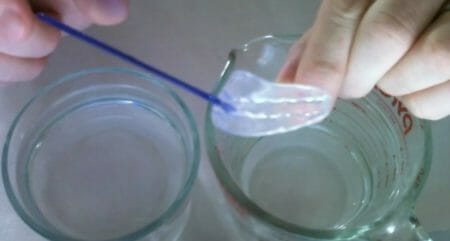
Once complete, the handle should point upward at a slight angle
Does it work?
 Now, for the moment of truth. Does the SnoreMeds really work?
Now, for the moment of truth. Does the SnoreMeds really work?
After completing the fitting process I was ready to put it to the test. Shortly before going to bed I put the SnoreMeds into my mouth. As with any boil and bite device, it does take a little while to become accustomed to wearing it. I have been using the GMSS for several months now so going back to a traditional boil and bite device was somewhat of a challenge at first.
For the first two night, there was a bit of soreness and excessive drooling that occurred. This is very typical of all MAD’s. After the second night had passed, I no longer experienced either of these side effects. From here it was smooth sailing.
I tested the SnoreMeds for a total of three weeks to see how the material held up with extended use. Once the three weeks were up I closely examined the mouth guards and did not see any signs of stress of failure.
So did it prevent my snoring? Yes! It worked every single night without a hitch. I had not experienced any snoring and woke up refreshed and energized every morning.
My recommendation
 When shopping for a standard thermoplastic boil and bite style mandibular advancement device, it’s very easy to become overwhelmed with the sheer number of products that are available.
When shopping for a standard thermoplastic boil and bite style mandibular advancement device, it’s very easy to become overwhelmed with the sheer number of products that are available.
Learning about a product is, of course, the best way to make an informed decision. Choosing a product that is safe and effective as well as comfortable and inexpensive should be your top priorities.
After trying out several MAD’s that are similar to this product, I realized that almost every one of them actually worked well. Since they all work, I recommend focusing on safety, comfort, and affordability.
The SnoreMeds passed the safety and comfort test without any issue.
One area where this product excelled was in value and affordability. I would definitely recommend going with the four pack because the per unit cost breaks down to $24.74 each. This is considerably less expensive in comparison to similar products that often sell for $60 each.
One potential downfall of this product is its life expectancy. According to the manufacturer, it must be replaced every 4 months so expect to go through at least three per year. Depending on how well you care for it and how gentle you are with it while sleeping, the time between replacements could be longer. After using for 3 weeks the SnoreMeds seemed to have held together very well and didn’t show any signs of needing replacement anytime soon.
Nonetheless, the SnoreMeds is an excellent product that is comfortable, safe, effective and very affordable. I would highly recommend this product to anyone who is looking to get the most bang for their buck.
Visit Snoremeds Website
Pros & Cons
Pros
- Quite effective
- Available in 2 different sizes
- Easy to create custom fit
- Comfortable to wear
- One piece design makes it near impossible to break
- Very inexpensive when purchasing the value pack
- Has two medium size air holes for mouth breathers
- BPA and Latex-free
- Made from FDA cleared material
- 45-day satisfaction guarantee
- Ships from the US
Cons
- May need to be replaced after 4 months
- Can only be remolded 2 times before no longer able to use
Which mouthpiece should I buy?
The anti-snoring mouthpiece is one of the most highly effective stop snoring solutions available. With over 100 different products to choose from, deciding which one to buy can be challenging.
As a snorer and product reviewer, I have tried many of these devices and created a list of recommended devices that will help to make this decision much easier.
Share This Post:


 Lately, I have received several emails from my readers concerning snoring mouthpieces that are simply too large to fit comfortably into their mouth. They are curious to know if a smaller, more compact alternative is available. Up until recently, most manufacturers have failed to address this size issue. The majority are still offering a “one-size-fits-all” solution when it comes to mandibular advancement devices. As we all know, people come in all different shapes and sizes and by offering a one-size solution, a certain segment of buyers are sure to run into issues when it comes to fitting and using their mouthpiece.
Lately, I have received several emails from my readers concerning snoring mouthpieces that are simply too large to fit comfortably into their mouth. They are curious to know if a smaller, more compact alternative is available. Up until recently, most manufacturers have failed to address this size issue. The majority are still offering a “one-size-fits-all” solution when it comes to mandibular advancement devices. As we all know, people come in all different shapes and sizes and by offering a one-size solution, a certain segment of buyers are sure to run into issues when it comes to fitting and using their mouthpiece.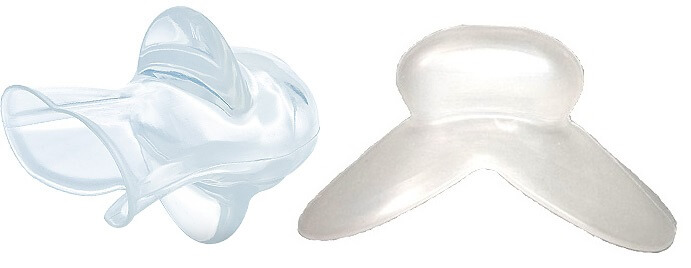

 If you are interested in the SnoreMeds, you may be wondering which size to go with, the “small” or the “regular”. The producer of this product suggests that women may want to go with the small size while men might want to choose the large size.
If you are interested in the SnoreMeds, you may be wondering which size to go with, the “small” or the “regular”. The producer of this product suggests that women may want to go with the small size while men might want to choose the large size.
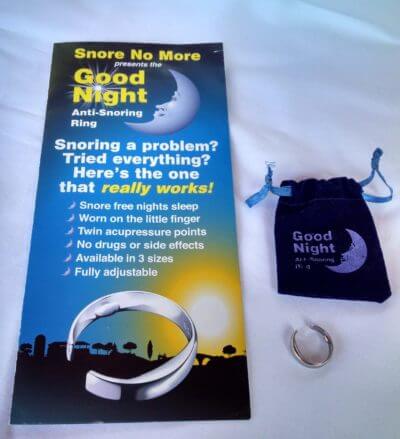
 Sizing & Specs
Sizing & Specs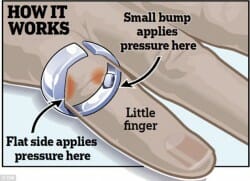
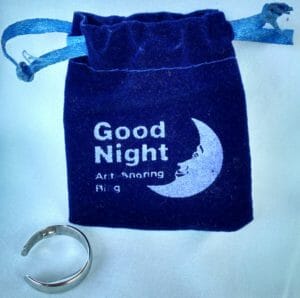 User Reviews
User Reviews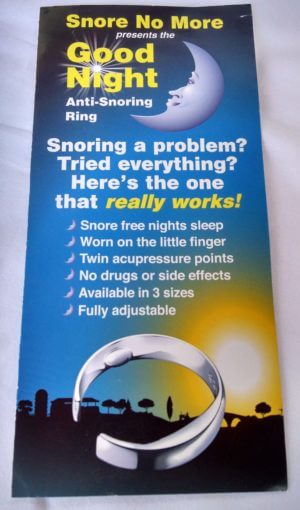 You can see the .925 stamp on the ring pictured in the brochure. This stamp signifies it’s sterling silver. The acupressure bump is very clear on the one side of the ring. The other acupressure point is located on the opposite side of the ring – you can recognize this by seeing a difference in the thickness of the ring. These opposite acupressure points are what stimulate the central nervous system and thus reduce swelling, clear the nasal cavities, and reduce snoring.
You can see the .925 stamp on the ring pictured in the brochure. This stamp signifies it’s sterling silver. The acupressure bump is very clear on the one side of the ring. The other acupressure point is located on the opposite side of the ring – you can recognize this by seeing a difference in the thickness of the ring. These opposite acupressure points are what stimulate the central nervous system and thus reduce swelling, clear the nasal cavities, and reduce snoring.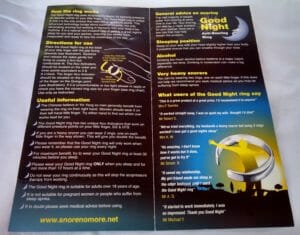 It’s best to wear the ring at least 30 minutes prior to sleeping and to wear the ring for no more than 12 hours. If it’s worn continuously, it will stop the acupressure therapy from working altogether.
It’s best to wear the ring at least 30 minutes prior to sleeping and to wear the ring for no more than 12 hours. If it’s worn continuously, it will stop the acupressure therapy from working altogether.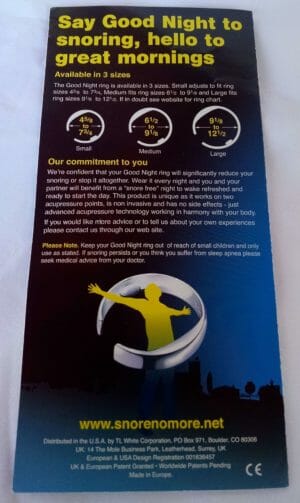 As usual, after a long day at work, I was asleep in no time. The next morning I woke up feeling refreshed and really put the ring to the test by getting the “wife test”. I asked my wife how my snoring was during the night and she couldn’t recollect hearing anything. That’s always a relief to hear, right? I was surprised myself to hear that this natural non-invasive method may actually be the trick to stop snoring. After passing the “wife test”, I continued back to the bedroom to remove the ring and store it in the velvet pouch until later that evening.
As usual, after a long day at work, I was asleep in no time. The next morning I woke up feeling refreshed and really put the ring to the test by getting the “wife test”. I asked my wife how my snoring was during the night and she couldn’t recollect hearing anything. That’s always a relief to hear, right? I was surprised myself to hear that this natural non-invasive method may actually be the trick to stop snoring. After passing the “wife test”, I continued back to the bedroom to remove the ring and store it in the velvet pouch until later that evening. Do you currently own the Goodnight Anti Snoring Ring or would like to ask a question about the product? Are you looking to purchase the snoring ring and need more specifications? Feel free to leave a comment below.
Do you currently own the Goodnight Anti Snoring Ring or would like to ask a question about the product? Are you looking to purchase the snoring ring and need more specifications? Feel free to leave a comment below.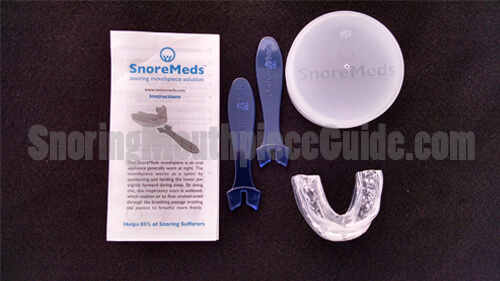
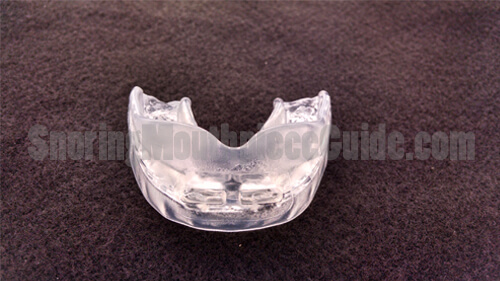
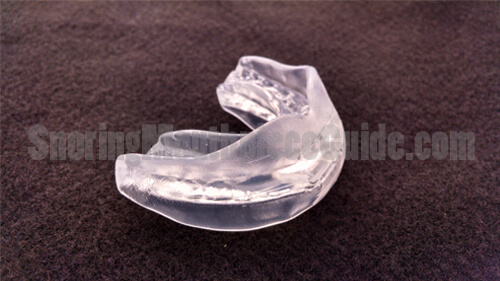
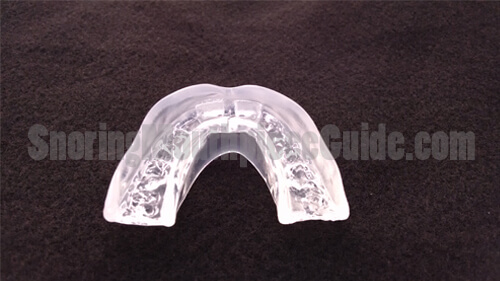
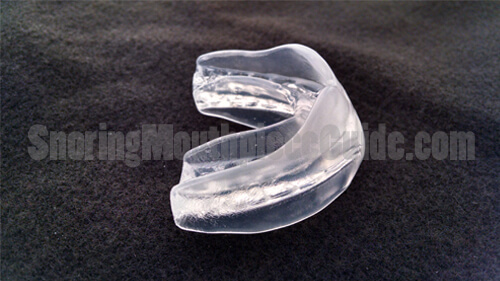
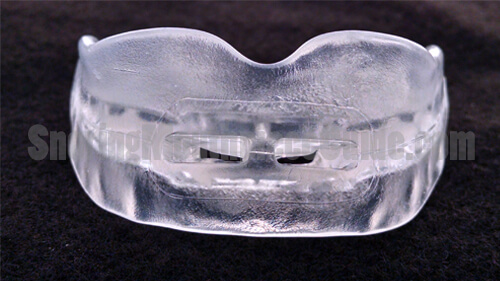
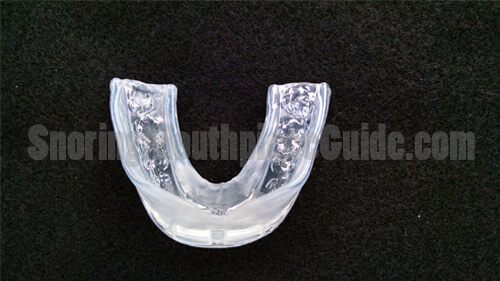



 One unique perk that this company offers is the ability to allow you to purchase mouthguards in bulk at a discounted rate. While most manufacturers offer only one device, SnoreMeds allows you to choose from three different packages- single, double, or value pack. Of course, the more that you purchase at once, the lower your cost per unit will be. Since the average lifespan of this particular mouthpiece is about 4 months, stocking up may not be a bad idea, especially when they are available at a discounted rate.
One unique perk that this company offers is the ability to allow you to purchase mouthguards in bulk at a discounted rate. While most manufacturers offer only one device, SnoreMeds allows you to choose from three different packages- single, double, or value pack. Of course, the more that you purchase at once, the lower your cost per unit will be. Since the average lifespan of this particular mouthpiece is about 4 months, stocking up may not be a bad idea, especially when they are available at a discounted rate.



 In general, most manufacturers offer some type of “money back guarantee” or “satisfaction guarantee” with their product. Industry-wide, this guarantee period is typically for 30 days after the product is received.
In general, most manufacturers offer some type of “money back guarantee” or “satisfaction guarantee” with their product. Industry-wide, this guarantee period is typically for 30 days after the product is received.
 While looking into the FDA status of the SnoreMeds, I noticed that the manufacturer states that they use “FDA cleared materials” to produce their mouthguards. The use of such material is recommended as other types of material used to produce an oral appliance could be potentially hazardous to your health.
While looking into the FDA status of the SnoreMeds, I noticed that the manufacturer states that they use “FDA cleared materials” to produce their mouthguards. The use of such material is recommended as other types of material used to produce an oral appliance could be potentially hazardous to your health. Being around for nearly a decade, there are several product reviews scattered across the internet. Here are a few customer reviews that I came across while searching for information on this product.
Being around for nearly a decade, there are several product reviews scattered across the internet. Here are a few customer reviews that I came across while searching for information on this product.



 Now, for the moment of truth. Does the SnoreMeds really work?
Now, for the moment of truth. Does the SnoreMeds really work? When shopping for a standard thermoplastic boil and bite style mandibular advancement device, it’s very easy to become overwhelmed with the sheer number of products that are available.
When shopping for a standard thermoplastic boil and bite style mandibular advancement device, it’s very easy to become overwhelmed with the sheer number of products that are available.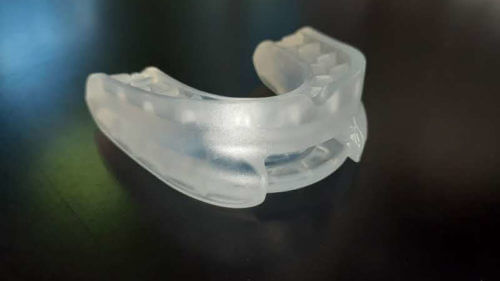
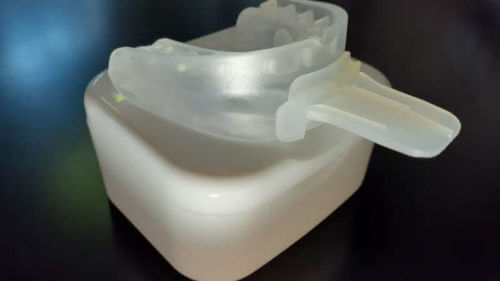
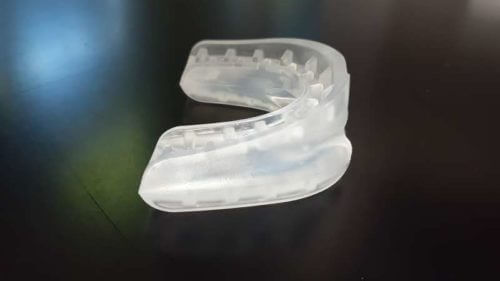
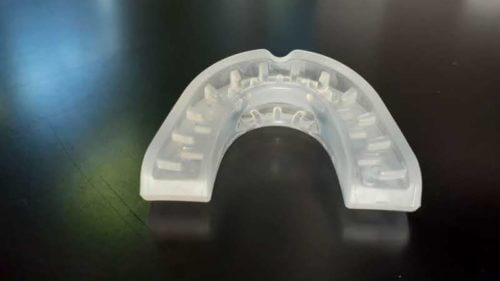
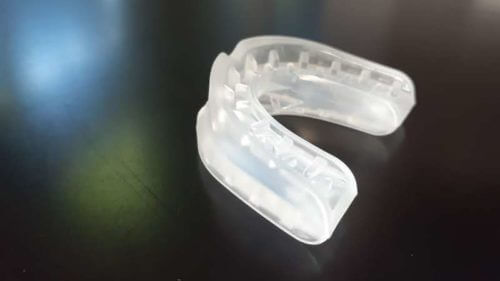
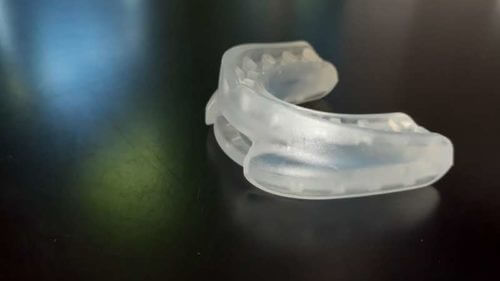
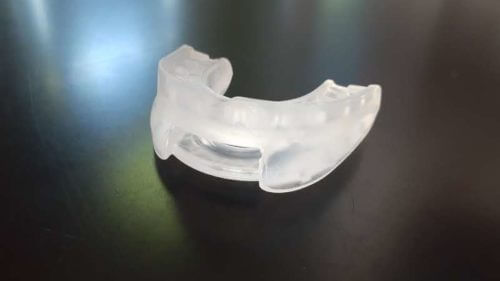
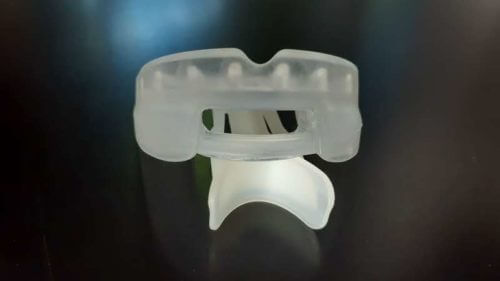
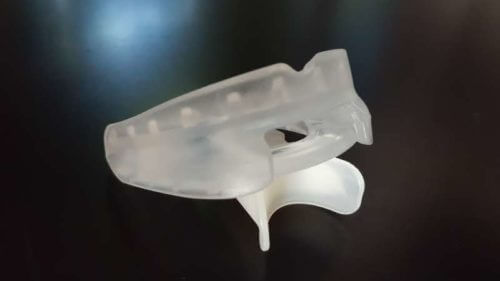
 The SleepTight mouthpiece was originally introduced in mid-2014 but has quickly captured the attention of snorers worldwide, becoming a leader in the anti-snoring industry. This product is considered a boil and bite style Mandibular Advancement Device (MAD) that can be custom fitted in the comfort of your home. The MAD is a mouthpiece that gently holds the lower jaw forward to prevent snoring. When holding the jaw forward, muscles and loose tissues surrounding the airway tighten up and the airway opens. A tighter, less restrictive airway will not vibrate and cause the sound of snoring. Although the SleepTight has only been around for about two years now, MAD’s have been used by dentists for several decades now and are
The SleepTight mouthpiece was originally introduced in mid-2014 but has quickly captured the attention of snorers worldwide, becoming a leader in the anti-snoring industry. This product is considered a boil and bite style Mandibular Advancement Device (MAD) that can be custom fitted in the comfort of your home. The MAD is a mouthpiece that gently holds the lower jaw forward to prevent snoring. When holding the jaw forward, muscles and loose tissues surrounding the airway tighten up and the airway opens. A tighter, less restrictive airway will not vibrate and cause the sound of snoring. Although the SleepTight has only been around for about two years now, MAD’s have been used by dentists for several decades now and are 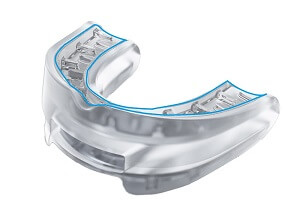 If you look closely at the SleepTight, you will notice that it actually contains not one, but three layers of material. There’s the center framework which is made from a soft, pliable thermoplastic and then there’s are thin 1.5 mm layers embedded into both the upper and lower trays which are made from a harder, more durable plastic. When heated, the two outer layers become gel-like and the plastic flows into the surface of each tooth to create a close impression. The plastic center frame also becomes soft and moldable but does not completely compress during the fitting process. With many boil and bite style mouthpieces, it’s very easy to bite completely through the plastic during the fitting. Doing so shortens the lifespan of the product and often renders it useless. The SleepTight’s patented dual laminate design prevents this from happening. The stiffness of the center shell helps to resist clenching forces which are common with snoring. Unfortunately, the stiffer material does not adapt well and these appliances tend to fall out during the night. The soft moldable liner of the interior core improves the fit, comfort and helps keep the SleepTight in all night.
If you look closely at the SleepTight, you will notice that it actually contains not one, but three layers of material. There’s the center framework which is made from a soft, pliable thermoplastic and then there’s are thin 1.5 mm layers embedded into both the upper and lower trays which are made from a harder, more durable plastic. When heated, the two outer layers become gel-like and the plastic flows into the surface of each tooth to create a close impression. The plastic center frame also becomes soft and moldable but does not completely compress during the fitting process. With many boil and bite style mouthpieces, it’s very easy to bite completely through the plastic during the fitting. Doing so shortens the lifespan of the product and often renders it useless. The SleepTight’s patented dual laminate design prevents this from happening. The stiffness of the center shell helps to resist clenching forces which are common with snoring. Unfortunately, the stiffer material does not adapt well and these appliances tend to fall out during the night. The soft moldable liner of the interior core improves the fit, comfort and helps keep the SleepTight in all night.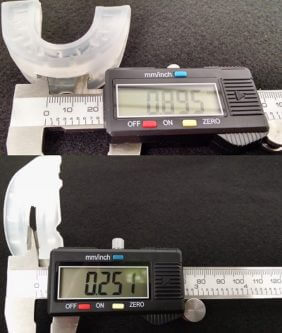
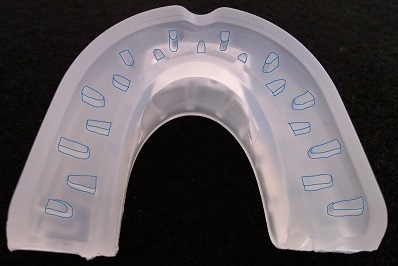
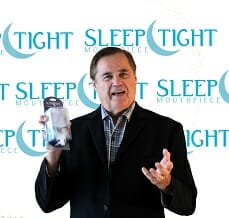
 Prior to marketing and selling any snoring mouthpiece in the United States, the Food and Drug Administration must evaluate the device and subsequently make a decision. This important safety step is often ignored by manufacturers who sell potentially dangerous products without government clearance. Receiving the green light from the FDA often takes several years (and thousands of dollars) which is one reason why manufacturers sometimes skip over this important step and sell their products illegally. The SleepTight was brought to market using the FDA 510(k) process (#K132506) in which the manufacturer shows that their product is “
Prior to marketing and selling any snoring mouthpiece in the United States, the Food and Drug Administration must evaluate the device and subsequently make a decision. This important safety step is often ignored by manufacturers who sell potentially dangerous products without government clearance. Receiving the green light from the FDA often takes several years (and thousands of dollars) which is one reason why manufacturers sometimes skip over this important step and sell their products illegally. The SleepTight was brought to market using the FDA 510(k) process (#K132506) in which the manufacturer shows that their product is “ As with all other mouthpieces, the SleepTight has its limitations when it comes to life expectancy. The life of this product may be shortened due to factors such as cleaning, maintenance, and teeth grinding. According to the manufacturer, this product should last anywhere from 6 months to 24 months.
As with all other mouthpieces, the SleepTight has its limitations when it comes to life expectancy. The life of this product may be shortened due to factors such as cleaning, maintenance, and teeth grinding. According to the manufacturer, this product should last anywhere from 6 months to 24 months. 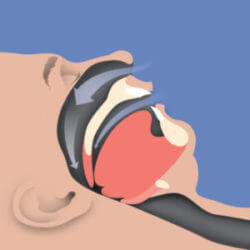 A question commonly asked is whether or not this mouthpiece can be used to treat sleep apnea. This product, or any other mandibular advancement device, should
A question commonly asked is whether or not this mouthpiece can be used to treat sleep apnea. This product, or any other mandibular advancement device, should 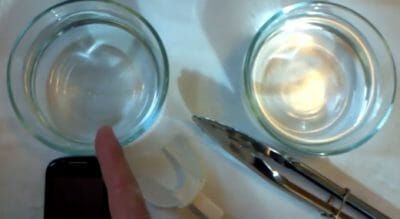
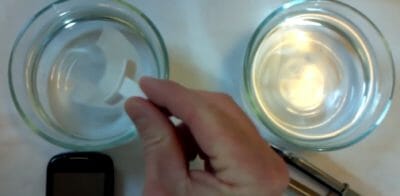
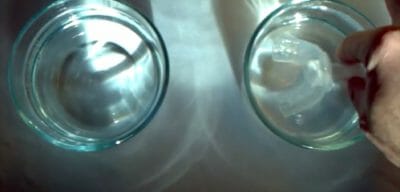
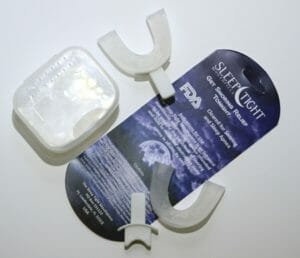
 After experiencing success, the first night I was ready to spend a few days testing out the
After experiencing success, the first night I was ready to spend a few days testing out the 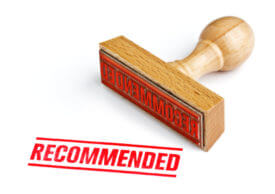 If you have been following my blog, you have likely seen me test out a number of different anti-snoring products over the years. In the end, I have found that most mouthpieces do prevent snoring to some degree. There are however areas where each one differs.
The SleepTight mouthpiece hit the nail on the head in nearly every category including ease of use, performance, comfort, and breathability. In the past, I have used a similar product called the SleepPro but prefer the SleepTight because it’s designed with one very large breathing hole instead of 2 smaller breathing ports. In addition, the SleepTight has a dual laminate design and ridges in the tray which helps to create a tighter fit. Being designed and created by a 30-year dental veteran gives this product a tremendous amount of credibility. Dr. Williams took all of the necessary steps to ensure product safety by obtaining FDA clearance prior to selling his mouthpiece. This is a step that is often left out by less reputable sellers who often sell potentially unsafe products at discounted prices. Having the ability to try this product by paying only $9.95 is a plus. If you decided to order using the link below, you will receive two mouthpieces for the price of one. Keep in mind that this offer is only valid to readers of this blog. The overall price is less than $50 per mouthpiece, including shipping. While the cost is just a few dollars more than questionable made in China mouthpieces, it’s well worth knowing that you are using a product that is safe to use as well as effective.
If you have been following my blog, you have likely seen me test out a number of different anti-snoring products over the years. In the end, I have found that most mouthpieces do prevent snoring to some degree. There are however areas where each one differs.
The SleepTight mouthpiece hit the nail on the head in nearly every category including ease of use, performance, comfort, and breathability. In the past, I have used a similar product called the SleepPro but prefer the SleepTight because it’s designed with one very large breathing hole instead of 2 smaller breathing ports. In addition, the SleepTight has a dual laminate design and ridges in the tray which helps to create a tighter fit. Being designed and created by a 30-year dental veteran gives this product a tremendous amount of credibility. Dr. Williams took all of the necessary steps to ensure product safety by obtaining FDA clearance prior to selling his mouthpiece. This is a step that is often left out by less reputable sellers who often sell potentially unsafe products at discounted prices. Having the ability to try this product by paying only $9.95 is a plus. If you decided to order using the link below, you will receive two mouthpieces for the price of one. Keep in mind that this offer is only valid to readers of this blog. The overall price is less than $50 per mouthpiece, including shipping. While the cost is just a few dollars more than questionable made in China mouthpieces, it’s well worth knowing that you are using a product that is safe to use as well as effective.  The Good Morning Snore Solution (GMSS) and the SnoreRx are two distinctly different products that are both designed to achieve one common goal which is to prevent snoring.
The Good Morning Snore Solution (GMSS) and the SnoreRx are two distinctly different products that are both designed to achieve one common goal which is to prevent snoring.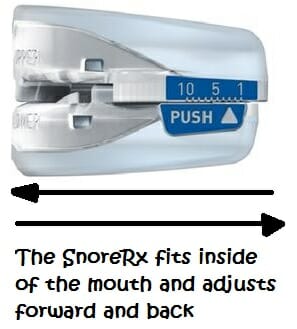 Place one device next to the other and it’s easy to see that there’s an undeniable difference in design.
Place one device next to the other and it’s easy to see that there’s an undeniable difference in design.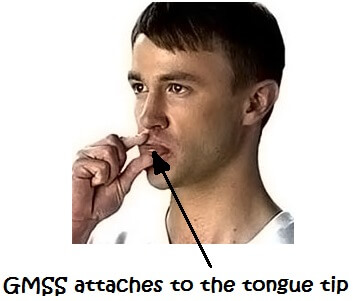 In comparison, the GMSS is considered a tongue stabilizing device (TDS) which also clears the airway but by using a different method in comparison to the MAD. The TSD is a relatively new technique that is used by the GMSS and its sole competitor, the
In comparison, the GMSS is considered a tongue stabilizing device (TDS) which also clears the airway but by using a different method in comparison to the MAD. The TSD is a relatively new technique that is used by the GMSS and its sole competitor, the 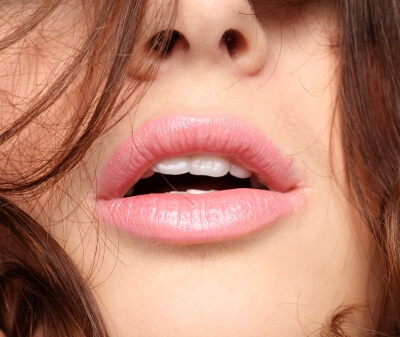 One attribute that really sets apart these two devices is their capability for mouth breathing. This is an important consideration that must be weighed when choosing between a TSD such as the GMSS and a MAD such as the SnoreRx. One product allows mouth breathing during use while the other does not.
One attribute that really sets apart these two devices is their capability for mouth breathing. This is an important consideration that must be weighed when choosing between a TSD such as the GMSS and a MAD such as the SnoreRx. One product allows mouth breathing during use while the other does not. Do either of these products really work? There’s no reason to invest in either device if they are not effective. Dozens of studies have been conducted measuring the rate of effectiveness of both types of devices. Here’s
Do either of these products really work? There’s no reason to invest in either device if they are not effective. Dozens of studies have been conducted measuring the rate of effectiveness of both types of devices. Here’s 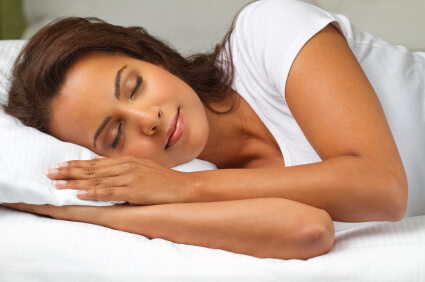 While both products are effective, an important consideration to weigh is the level of comfort. A comfortable device will be more tolerable which increases the likelihood of long-term compliance. If it’s uncomfortable to wear, odds are you will wear it for a few days before permanently storing it away or disposing of it.
While both products are effective, an important consideration to weigh is the level of comfort. A comfortable device will be more tolerable which increases the likelihood of long-term compliance. If it’s uncomfortable to wear, odds are you will wear it for a few days before permanently storing it away or disposing of it.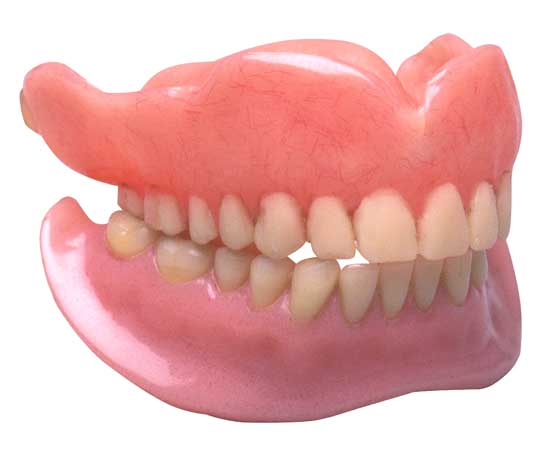 One obstacle that denture wearers often encounter is finding a mouthpiece that they can use.
One obstacle that denture wearers often encounter is finding a mouthpiece that they can use. As for price, the GMSS and the SnoreRx rival each other.
As for price, the GMSS and the SnoreRx rival each other. After comparing these two products you may still be wondering which product is better. The answer to this question will depend on your individual circumstances. They are both great products that are effective when used under the right circumstances and cost roughly the same amount of money.
After comparing these two products you may still be wondering which product is better. The answer to this question will depend on your individual circumstances. They are both great products that are effective when used under the right circumstances and cost roughly the same amount of money.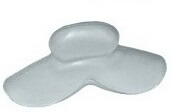
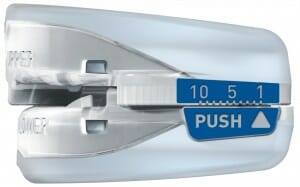

 As a chronic snorer, I have
As a chronic snorer, I have 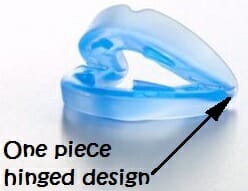
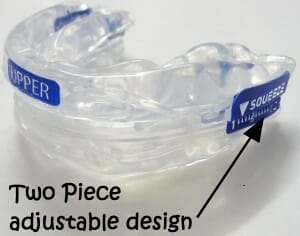
 One of the most notable differences between the ZQuiet and SnoreRx is the thickness of the device. The ZQuiet has an overall profile that is rather thin and compact while the SnoreRx has a thicker profile that takes up more room inside the mouth.
One of the most notable differences between the ZQuiet and SnoreRx is the thickness of the device. The ZQuiet has an overall profile that is rather thin and compact while the SnoreRx has a thicker profile that takes up more room inside the mouth. One of the greatest advantages that the SnoreRx has over the ZQuiet is the ability to be adjusted to the precise setting needed to prevent snoring. The advancement setting of SnoreRx can be moved in 1-millimeter increments, up to 10mm or approximately 1/2″ by simply pushing in on the sides of the device and ratcheting the lower tray forward. This is a key component when it comes to preventing snoring. A mouthpiece that does not hold the lower jaw forward in just the right position simply will not prevent snoring.
One of the greatest advantages that the SnoreRx has over the ZQuiet is the ability to be adjusted to the precise setting needed to prevent snoring. The advancement setting of SnoreRx can be moved in 1-millimeter increments, up to 10mm or approximately 1/2″ by simply pushing in on the sides of the device and ratcheting the lower tray forward. This is a key component when it comes to preventing snoring. A mouthpiece that does not hold the lower jaw forward in just the right position simply will not prevent snoring. Prior to being used, the SnoreRx must be heated in hot water for 60 seconds and then placed in the mouth for 30 seconds in order to create a custom impression of your teeth.
Prior to being used, the SnoreRx must be heated in hot water for 60 seconds and then placed in the mouth for 30 seconds in order to create a custom impression of your teeth. Both products are FDA cleared. You can review the 501K summaries for each device
Both products are FDA cleared. You can review the 501K summaries for each device  While you can pay the shipping and processing charges of $9.95 and “try” the zQuiet for 30 days, the actual purchase price is $59.95 plus the shipping and processing charge of $9.95. The overall out the door cost is $69.90.
While you can pay the shipping and processing charges of $9.95 and “try” the zQuiet for 30 days, the actual purchase price is $59.95 plus the shipping and processing charge of $9.95. The overall out the door cost is $69.90. Compared side by side, these two mouthpieces have several common characteristics and are equally effective when it comes preventing snoring.
Compared side by side, these two mouthpieces have several common characteristics and are equally effective when it comes preventing snoring.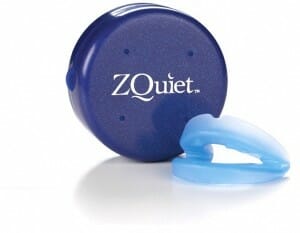
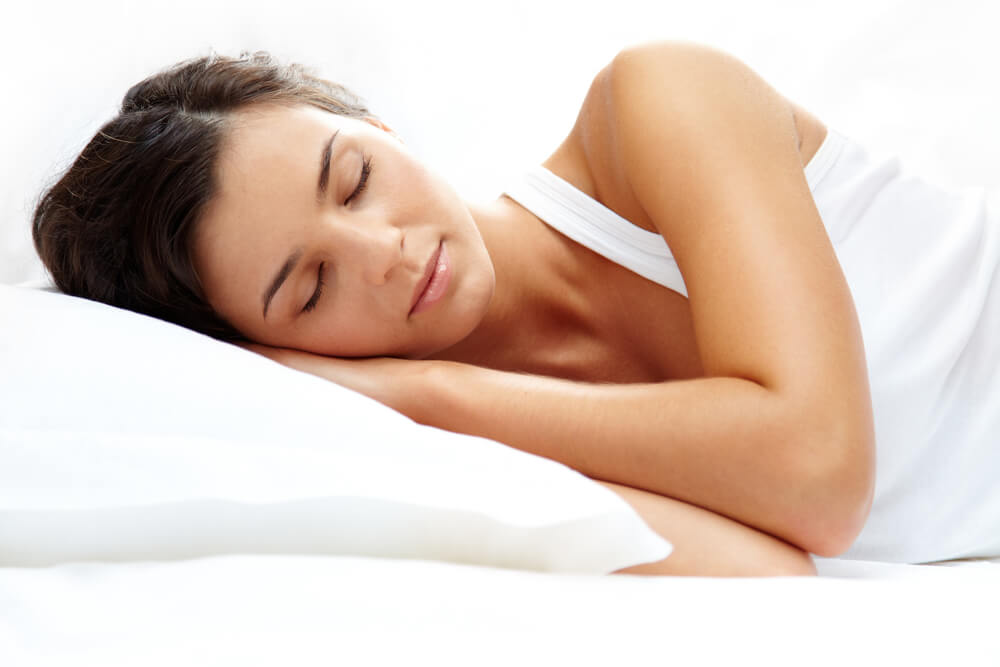 Before discussing how alcohol causes snoring, it’s important to have a basic understanding of what sleep is and how consuming alcohol affects sleep.
Before discussing how alcohol causes snoring, it’s important to have a basic understanding of what sleep is and how consuming alcohol affects sleep. One of the most pervasive myths regarding sleeplessness is that alcohol induces a good night’s sleep. Alcohol does help people relax and fall asleep faster, but it also gives rise to low sleep quality and decreased time in REM sleep.
One of the most pervasive myths regarding sleeplessness is that alcohol induces a good night’s sleep. Alcohol does help people relax and fall asleep faster, but it also gives rise to low sleep quality and decreased time in REM sleep. Alcohol is classified as a depressant. Like sedatives, it travels throughout the body and slows the brain’s ability to respond to stimuli. Its sedative effect causes a deeper relaxation of muscles than normal sleep. As a result, the oropharynx (the back of the throat) folds faster when compared to that of a sober individual. The collapse of the oropharynx is one of the prime reasons for snoring.
Alcohol is classified as a depressant. Like sedatives, it travels throughout the body and slows the brain’s ability to respond to stimuli. Its sedative effect causes a deeper relaxation of muscles than normal sleep. As a result, the oropharynx (the back of the throat) folds faster when compared to that of a sober individual. The collapse of the oropharynx is one of the prime reasons for snoring.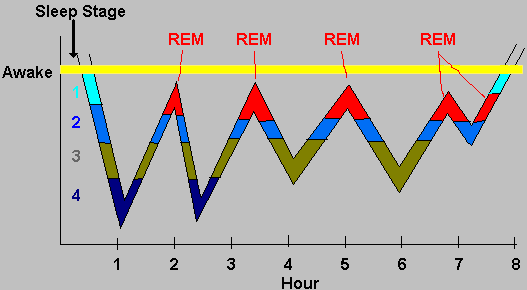
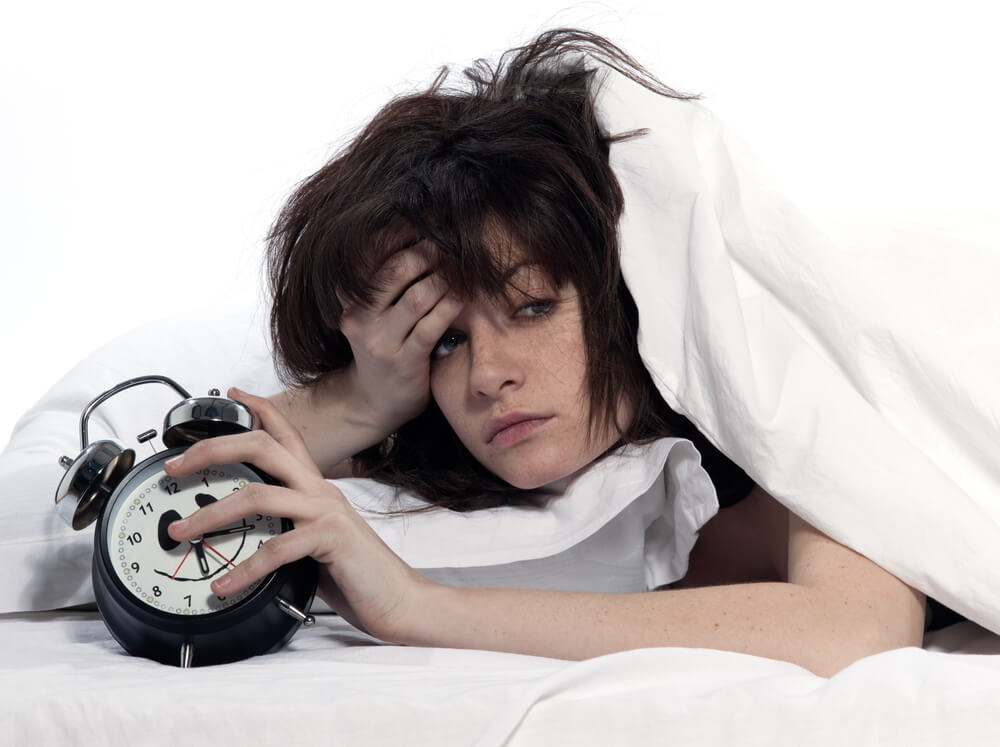 Researchers have found a connection between obstructive sleep apnea and alcohol. Since alcohol suppresses breathing, it affects the breathing center in the brain by masking decreased oxygen levels in the body, creating the possibility of tissue damage.
Researchers have found a connection between obstructive sleep apnea and alcohol. Since alcohol suppresses breathing, it affects the breathing center in the brain by masking decreased oxygen levels in the body, creating the possibility of tissue damage.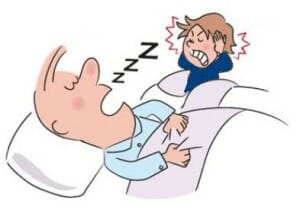 As a snorer, you might be interested in having a better understand why snoring occurs. This has been a topic of debate among medical professionals for several years now. As it turns out, there are actually
As a snorer, you might be interested in having a better understand why snoring occurs. This has been a topic of debate among medical professionals for several years now. As it turns out, there are actually 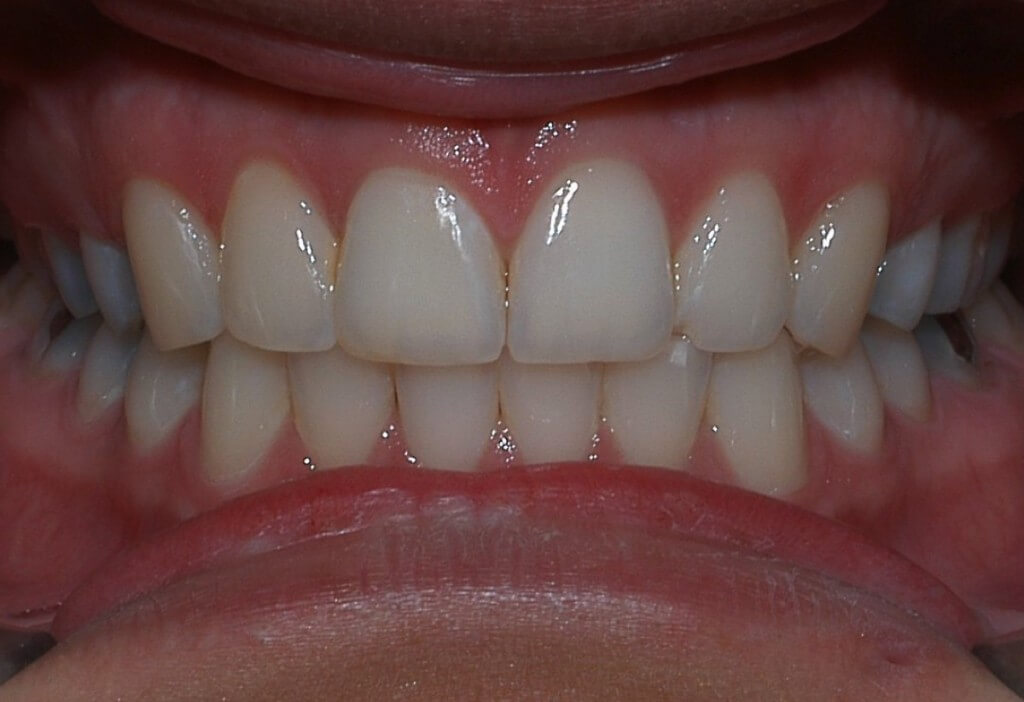
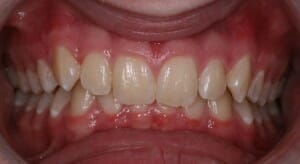
 One who has a severe overbite my rush to the conclusion that
One who has a severe overbite my rush to the conclusion that 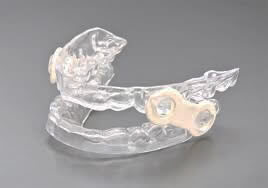

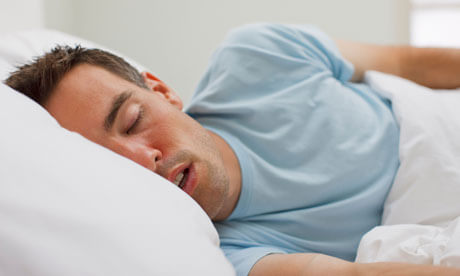 Positional therapy is a concept that many snoring and obstructive sleep apnea suffers have likely never even heard of. It’s a very simple method that can effectively eliminate snoring and in some cases, prevent mild OSA from occurring. This noninvasive technique costs little to nothing to try and is often overlooked by many who bypass this simple solution while seeking more popular methods such as the CPAP machine or oral appliances.
Positional therapy is a concept that many snoring and obstructive sleep apnea suffers have likely never even heard of. It’s a very simple method that can effectively eliminate snoring and in some cases, prevent mild OSA from occurring. This noninvasive technique costs little to nothing to try and is often overlooked by many who bypass this simple solution while seeking more popular methods such as the CPAP machine or oral appliances.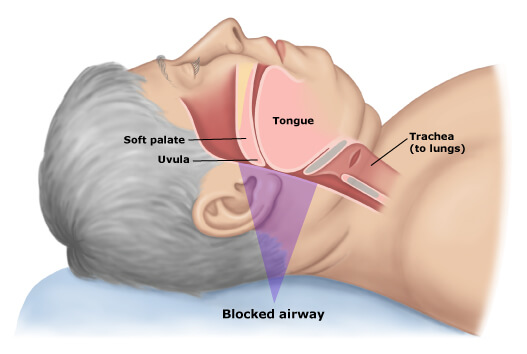 Having a basic understanding of why
Having a basic understanding of why 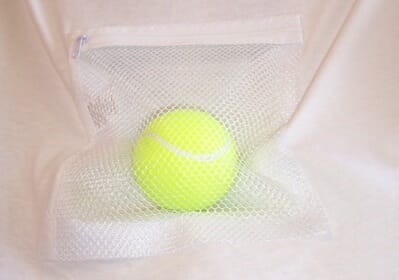 The least expensive solution is to
The least expensive solution is to 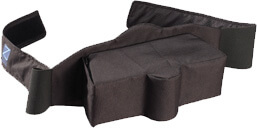
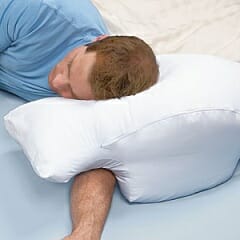 A similar bumper belt device can be fashioned at home by filling a lightweight backpack with foam, bubble wrap or packing peanuts and then securing it to the back before going to sleep. This less expensive method can be just as effective yet created for a fraction of the price.
A similar bumper belt device can be fashioned at home by filling a lightweight backpack with foam, bubble wrap or packing peanuts and then securing it to the back before going to sleep. This less expensive method can be just as effective yet created for a fraction of the price.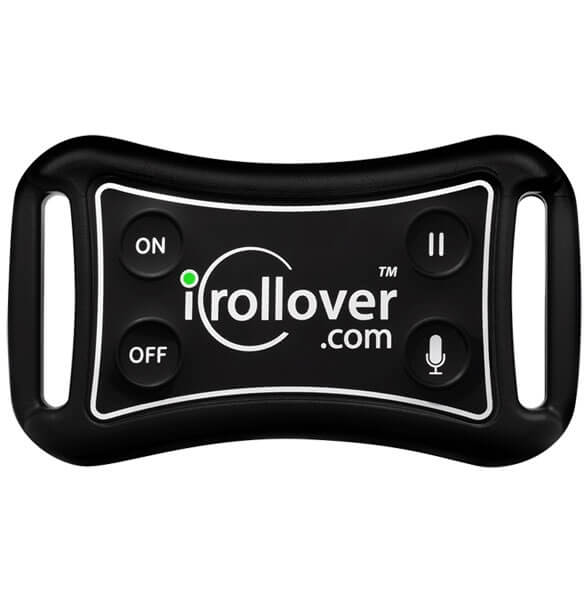
 Unfortunately, side sleeping does not work for everyone. It’s estimated that up to 60% of snorers are positional snorers. The other 40% will have to look elsewhere for relief.
Unfortunately, side sleeping does not work for everyone. It’s estimated that up to 60% of snorers are positional snorers. The other 40% will have to look elsewhere for relief.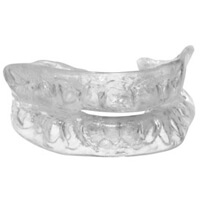

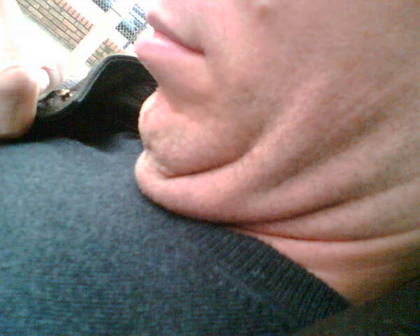 When overweight, it’s easy to look into the mirror and see all of the areas where your body is storing extra fat. Genetics and gender both play an important role when it comes to the areas where our body decides to deposit extra fat. Some retain weight in the neck, stomach, hips, butt, or thighs while others may store fat under the arms, sides, calves or chest.
When overweight, it’s easy to look into the mirror and see all of the areas where your body is storing extra fat. Genetics and gender both play an important role when it comes to the areas where our body decides to deposit extra fat. Some retain weight in the neck, stomach, hips, butt, or thighs while others may store fat under the arms, sides, calves or chest.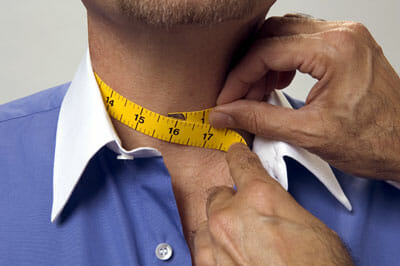 It’s often said that men tend to snore than women. Why is this the case?
It’s often said that men tend to snore than women. Why is this the case? If you snore and are overweight, you may be interested in taking steps to eliminate your snoring. The first logical approach is to lose some weight, right? This leads to the question of weight loss as it relates to snoring. Will losing weight stop your snoring?
If you snore and are overweight, you may be interested in taking steps to eliminate your snoring. The first logical approach is to lose some weight, right? This leads to the question of weight loss as it relates to snoring. Will losing weight stop your snoring?